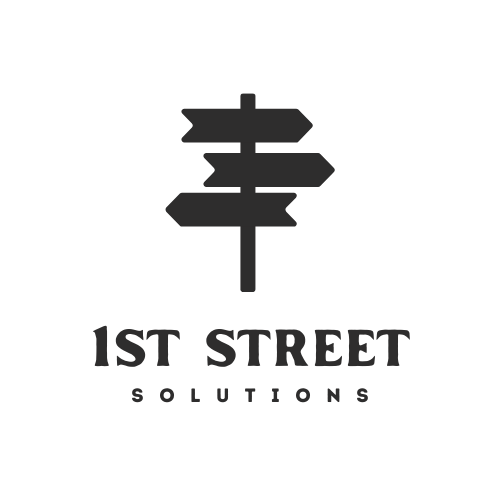In an era of relentless digital creation, the last thing a professional wants is to be slowed down by cumbersome security. For years, the gateway to powerful tools like Photoshop, Illustrator, and Premiere Pro has been the humble password—a tedious, often insecure string of characters. But the future of access is rapidly changing. Biometric authentication, which uses unique biological traits to verify identity, is poised to replace this outdated method, ushering in an era of enhanced security and unparalleled convenience for Adobe Creative Cloud users.
The Problem with Passwords and Why We Need a Change
The traditional password system is fundamentally flawed in a world of sophisticated cyber threats. For creative professionals, who often handle sensitive client data and valuable intellectual property, a single password can be a major vulnerability. Weak or reused passwords are easy targets for hackers, while complex ones are difficult to remember, leading to a constant cycle of password resets and frustration. This friction directly impacts productivity, taking valuable time away from the creative process. A single data breach could lead to the theft of an entire portfolio of work, making the need for a more secure and seamless solution critical.
The Rise of Biometric Authentication
Biometric authentication offers a revolutionary solution by turning your unique physical attributes into your digital key. This technology bypasses the need for memorization and provides a level of security that passwords simply cannot match. It’s no longer a futuristic concept but a present-day reality, with most modern devices, from smartphones to laptops, equipped with the necessary hardware.
Facial Recognition: A New Standard
One of the most intuitive and widely adopted forms of biometrics is facial recognition. This technology uses cameras to map and identify the unique contours and features of a user’s face, providing a hands-free method of authentication. The process is instantaneous; a user can simply look at their device and gain secure access to their Creative Cloud account. The seamless integration of facial recognition into the sign-in process means you can go from turning on your computer to launching Photoshop in a matter of seconds, without ever needing to type a single character. This convenience is a game-changer for professionals who need to act on a creative impulse without delay.
Fingerprint Scanning: A Proven Method
Fingerprint scanning is another powerful biometric technology that has been refined over the years. Found on a vast range of devices, it offers a fast and reliable way to authenticate. By simply placing a finger on a scanner, a user can instantly unlock their Creative Cloud account. This method is particularly useful for tablets and mobile devices where typing can be cumbersome. Both facial recognition and fingerprint scanning provide a robust layer of protection, as they are inherently linked to the individual and are extremely difficult to replicate.
Integrating Biometrics with Creative Cloud
For Adobe, integrating biometric authentication is not just about a better sign-in page; it’s about building a more secure and efficient creative ecosystem. By leveraging the built-in biometric capabilities of devices, Adobe can provide a fluid and secure path to its applications.
Enhanced Security for Creative Professionals
The primary benefit is the dramatic increase in security. Biometrics add a critical layer of protection for valuable creative assets.
- Reduced Vulnerability: Biometric data is stored securely on the user’s device, not on a remote server, minimizing the risk of a large-scale data breach.
- Stronger Access Control: It becomes nearly impossible for an unauthorized person to gain access to an account, even if they have stolen a user’s device.
- Multi-Factor Authentication (MFA): Biometrics can be used as a powerful second factor in a multi-factor authentication setup, providing an extra layer of defense for the most sensitive data.
A Seamless User Experience
The move to biometric authentication also aligns with Adobe’s commitment to creating a friction-free workflow.
- Instantaneous Access: Eliminates the time-consuming process of entering usernames and passwords.
- Effortless Switching: Allows users to seamlessly switch between devices and applications without the need for repeated manual logins.
- Personalization: The system can quickly identify a user and load their personalized settings and workspaces, creating a more intuitive and tailored experience.
The Role of AI and the Future of Workflows
The underlying technology that powers biometric authentication is a sophisticated form of artificial intelligence. This same AI is revolutionizing how we interact with creative software. The same kind of machine learning that allows a system to accurately identify a user’s face or fingerprint is also behind some of the most advanced features in Adobe’s applications. It’s the same artificial intelligence that dictates how to use Photoshop AI for generative tasks, making it possible to effortlessly remove an object from a photo or extend a background with just a text prompt.
The seamless integration of biometric security and in-app AI creates a holistic, intelligent workflow. For example, a future where a professional’s biometric profile could not only unlock their account but also load their custom brushes and filters, all powered by the same underlying artificial intelligence, is not far off. This interconnected ecosystem would allow artists and designers to spend less time on administrative tasks and more time on actual creation.
Challenges and Considerations
While the benefits are clear, the transition to biometric authentication is not without its challenges.
- Privacy Concerns: Users must trust that their biometric data will be handled with the utmost care and not used for any purpose beyond authentication. Adobe must be transparent in its data security policies.
- Accessibility: Not everyone may be able to use biometric features. The system must provide secure, reliable alternative methods of authentication to ensure no user is locked out of their account.
- System Reliability: The technology must be consistently accurate and reliable to prevent false negatives that could frustrate users.
Conclusion: A Passwordless Future
The future of sign-in for the Creative Cloud is one where passwords are a thing of the past. The move towards biometric authentication is a logical and necessary step in the evolution of digital security and user experience. It offers a powerful blend of robust protection and unparalleled convenience, allowing creative professionals to focus on what they do best: creating. By embracing technologies like facial recognition and leveraging the power of artificial intelligence, Adobe is not just changing how we sign in, but it’s shaping a more secure, efficient, and ultimately more creative future for artists and designers around the world. The journey to a truly passwordless workflow is well underway, and it promises to transform the way we interact with our tools, one touch and one glance at a time.








